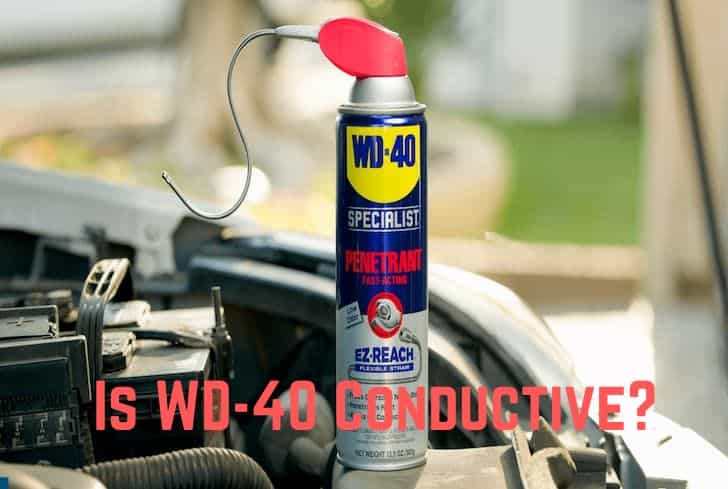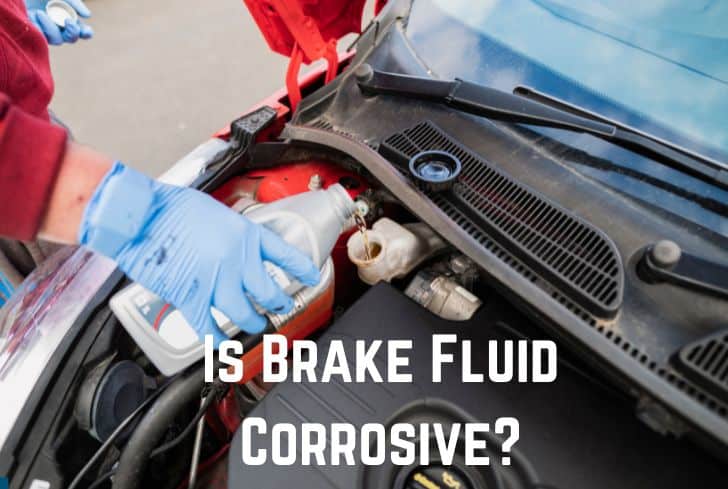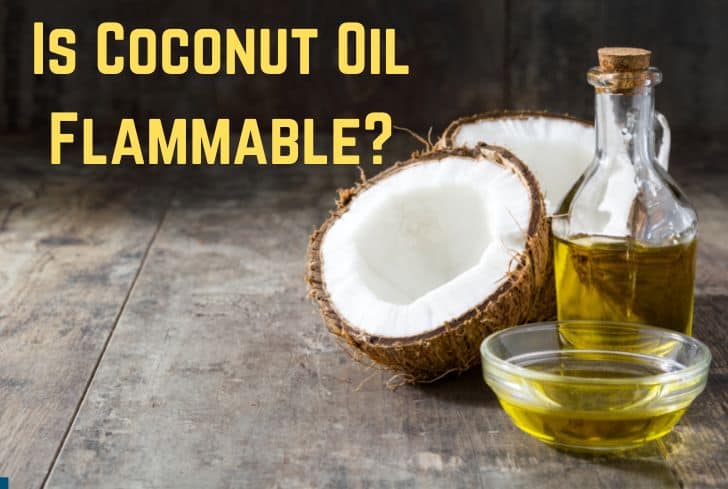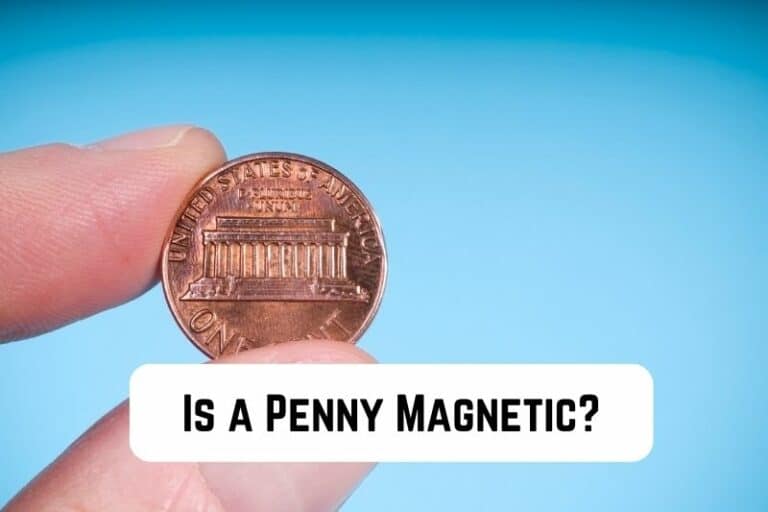Is WD-40 Conductive? (And Can it Cause Short Circuit?)

Oil and other lubricants are usually bad conductors of electricity as they do not let current pass so easily. Since oil cannot be used for conducting electricity, a common question that arises is – is it the same case for WD-40?
The American lubricant is a multipurpose product that mainly acts as a prevention for rust, but can be used to oil machinery, fix old parts, tile floorings, bolts, etc. Its uses are so flexible that people have wondered whether WD-40 can be used on their electrical devices or not.
We have compiled everything you might want to know about WD-40 as a conductor in this article. Read on to know more.
Does WD-40 Conduct Electricity?
WD-40 is not a conductor but an insulator with a low dielectric strength of 35KV. It can drive moisture out of electric components, save flooded equipment, and restore electrical connections. For sensitive electrical components, you can use the non-conductive “WD-40 Specialist Contact Cleaner” which is designed specifically for this purpose.
WD-40 is designed to be a good insulator. When it dries out, it leaves a very thin film on your electrical components that does not interfere with the electrical connection. So, it’s safe to use it on electrical devices without worrying about damaging them.
WD-40 Specialist Contact Cleaner leaves no residue or deposits, in contrast to some contact cleaners on the market, which could accumulate and potentially lead to issues like a short circuit. Fast-acting, non-conductive, and non-corrosive WD-40 Specialist Contact Cleaner is suited for use on all delicate surfaces electrical components. It offers great cleaning results with little effort and effortlessly eliminates dirt, dust, moisture, and flux residue without endangering delicate electrical or electronic components.
However, you should only use the non-conductive WD-40 Contact Cleaner on your sensitive electrical components. It will remove dirt and dust without leaving any residue or damaging them.
Remember to always turn off your electrical device before using WD-40 and let it dry completely before powering it up.
Can You Spray WD-40 On Electrical Connections?
Since WD-40 does not conduct electricity, it is okay to spray on electrical connections to smoothen things. However, it is better to let it dry and wipe the surface after some time in order to prevent the chances of a short circuit. WD-40 is extremely flammable and can cause a fire if it catches a spark.
However, with its lubricating properties, WD-40 is a great product to clean electrical connections and make sure they are working efficiently. It removes more than 90% of surface impurities, dries quickly, and leaves no residue.
You can also spray WD-40 on electric panels, switches, controllers, circuit boards, and sensitive electronics.
Does WD-40 Damage Electronics?
According to the company, WD-40 is safe to use on electronics as it is a safe, non-conductive spray. It will not damage electronics, but you have to be careful not to let it get inside devices that produce excessive heat as WD-40 is flammable.
Another risky problem to worry about is that electronics sometimes cause sparks, which is dangerous as WD-40 is highly flammable. Hence, you might want to be careful with using it for complicated electronic devices like phones and computers.
In a controlled experiment, the classic WD-40 was found safe to use on electronic circuits with voltages lower than 100V. For sensitive electronics, make sure you use the WD-40 Contact Cleaner to not damage them.
Can WD-40 Cause a Short Circuit?
WD-40 is a highly flammable oil as it contains aerosol, so the chance of a short circuit is very likely. It is also combustible when dry – meaning that if you do not clean the area after using the lubricant on it, then it can still catch fire. It might not conduct electricity, but be careful when using it on gadgets that can create sparks.
Also, note that WD-40 is petroleum based and not good for vacuum tubes in gadgets like computers.
The residue can cause problems when they get hot. It can conduct at high voltages and at the very least will stink when it starts to warm up. It will gunk up keyboards, and jam up anything else mechanical as it dries.
A better alternative to clean up small objects like sockets, pins, RAM, and PCI slots is good-quality isopropyl alcohol.

Can You Use WD-40 On Electrical Switches?
It is okay to use WD-40 Contact Cleaner on electrical switches. It is non-conductive, removes over 90% of surface impurities. dries quickly, and leaves no residue. However, you must make sure the switch is off before using it.
WD-40 has the ability to reach small and stubborn areas to clean and lubricate them. So, it won’t harm to use on electrical switches.
To avoid any sparks that can ignite WD-40, you must turn off the power before applying the product. Let it dry completely then remove any residue, if there is any, because dry WD-40 is still combustible.
Can WD-40 Be Used as a Degreaser?
Unlike other harsh degreasers, which can injure most surfaces, such as metals, plastics, rubber, glass, aluminum, and more, WD-40 contains a special industrial-strength solvent that swiftly dissolves grease. Hence, it works great as a degreaser for cars, kitchens, and water systems.
It easily removes stubborn grease and filth and has corrosion inhibitors added to help prevent flash rust. You can also use WD-40 to clean heavy greasy messes and soils off car and truck engines, tractors, forklifts, gears, chains, industrial machinery, power equipment, and other metal instruments.
Avoiding contact with sealed bearings is one thing you must be very careful about. A drop or two is acceptable, but more than that will quickly damage the sealed bearing since WD-40 has excellent capillary action and may readily pass through the seal. This will contaminate and dilute the grease inside.
Various Uses of WD-40
The ‘WD’ in WD-40 stands for ‘water displacement’ because it is mainly used as an agent to remove moisture from rusted metals. The anti-friction coatings on moving components, paint, locks, and hinges can all be slowly removed by WD-40, and it can also dissolve any real lubricants that may be in its way.
The lubricant is made up of hydrocarbons and works well for a lot of purposes. According to the brand’s official website, the following are the many ways in which you can use WD-40.
1. Prevention From Rust
The main reason behind the development of WD-40 was to create a strong formula that can remove rust from a surface. As mentioned before, water displacement is the main expertise of the WD-40 and it can easily rub rust out of circular saws and hacksaw blades, and clean tar and other dirt off blades and metals.
However, it may not be the best for removing rust from door hinges and bicycle chains. In these cases, it tends to leave the area with a sticky surface that catches more dust and debris and creates further problems.
2. Cleaning Purposes
The WD-40 can also be used for cleaning gunk and tar off old tiles and rusted metals. It can also remove dark stains from acrylic paints, mascara, and scuff marks. In fact, hard substances like nail polish can also be removed by the spray.
With only a bit of WD-40 on a cloth, you can even wipe grime from grout lines and scrub off stains from old, charred steel. If you have residue from stickers, tape, price tags, etc. on your belongings, then using WD-40 on the surface can remove the goo easily.
3. As A Lubricant
WD-40 is also used widely as a lubricant for garden tools like shovels, spading forks, and hoes when digging sticky and hard soils like clay. Pour some on the mud clinging to the tool and you can easily wipe it off. If you have a stiff leather tool belt, you can also use WD-40 to loosen it up.
As a lubricant, it has also been used for items that cling together like pots and even Lego! Even getting difficult, sticky items like chewing gum from carpets and hair can easily be removed using WD-40 as a lube. This can save you the loss of cutting a whole portion out of your belongings.
4. Getting Rid Of Color Stains
You can also use WD-40 to get rid of difficult color stains that may not go away with just detergent and water. Fast-drying colors like acrylic and crayons can easily be removed from walls, toys, furniture wallpaper, windows, television screens, and even doors. All you have to do is spray and wipe!
Even hard stains like that of a permanent marker can be removed using WD-40’s solvent. However, the surface it is applied to makes a significant factor – it will be easier to remove the marker from a surface that has a glossy paint finish, such as the walls in kitchens and bathrooms, but not from a matte-finished surface.
5. Clean the sticky label residue off of the glass jars
The basic idea is the same as with the gum trick: almost any surface may be cleaned of sticky residue using WD-40. You’ll spend a lot less time standing over the sink if you use WD to clean glass jars instead of warm, soapy water.
6. Keep splinters out of the wooden handles of gardening tools
If you’ve ever had a splinter from using shovels with wooden handles, take preventative measures by WD-40-lubricating your tools. The oil will maintain the moisture in the wood, and keep it from splintering while you’re using it! Just something to be aware of before the new planting season begins.
7. Remove tangled glasses
What could be more annoying than a group of breakable glasses that are stuck together? The glass will become lubricated and will be simpler to separate if some WD-40 is sprayed into the cracks. Just be careful to thoroughly wash the glassware before using it again.
8. Gum can be taken out of almost anything
If you (or a young child in your home) have a gum-related accident, you should have a can of WD-40 on hand. A light WD-40 spraying will increase its tenfold power to easily remove sticky substances from anything you need to, whether we’re talking hair or your dining room rug.
Related Questions
Can You Spray WD-40 On Electric Circuit Boards?
It is safe to spray WD-40 on electric circuit boards as long as you do not do so when the switch is on – in which case it will lower the risk of flammable sparks flying and coming in contact with the oil. Also, remember to clean the area once off any WD-40 residue as the formula is flammable even when dry.
Is WD-40 Dielectric?
WD-40 is dielectric with a strength of 35KV. Due to this, it can be used to repair electrical connections, shield components from moisture, and even save equipment that has been submerged in water.
Can WD-40 Cause A Short Circuit?
It is possible that WD-40 can cause a short circuit as it is a flammable substance and upon coming in contact with a spark from a loose circuit, it can cause a fire.
What Should WD-40 Not Be Used With?
As a lubricant and rust remover, WD-40 should not be used on bike chains, door hinges, gadgets, locks, and paintball guns.
Final Thoughts
When WD-40 is used as an insulation oil, it can combust under high voltage, so it is better to keep it away from electricity and flame anyway. Do not try to use it to conduct electricity as it will not work, but also create a risk. We hope this article has helped you understand what you need to know about WD-40.






